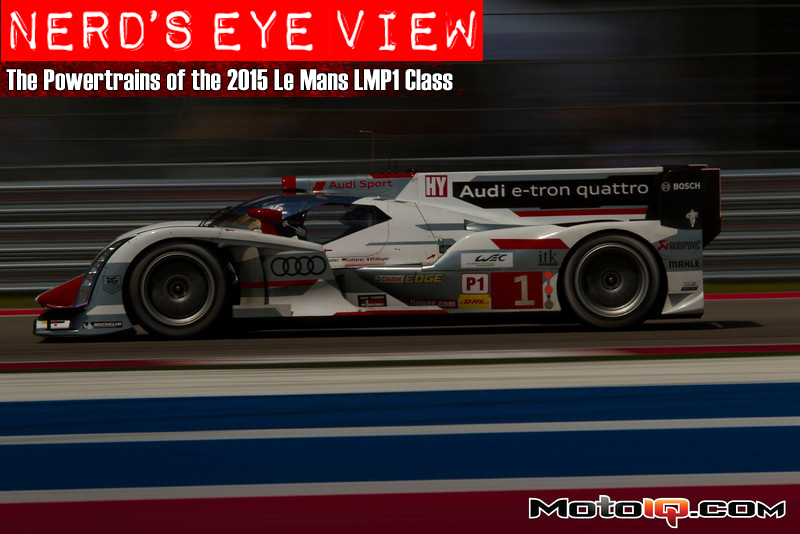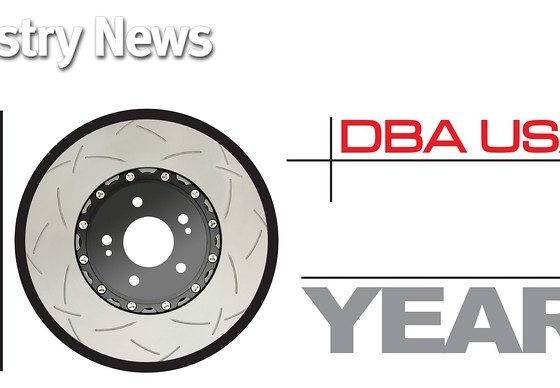,

 The compressor side of the turbo is quite unique by having two outlets; each outlet feeds one bank of the engine. You can also see the actuator which controls the vanes of the VNT mounted in the middle of the turbo. (Photo from Fourtitude.com)
The compressor side of the turbo is quite unique by having two outlets; each outlet feeds one bank of the engine. You can also see the actuator which controls the vanes of the VNT mounted in the middle of the turbo. (Photo from Fourtitude.com) It’s not just the engines that are being developed but also the individual components like the turbocharger. This is the turbocharger for the Ford Powerstroke diesel engine. Notice that it is a VNT with twin-entry turbine housing like the turbo used on the Audi R18 race engine.
It’s not just the engines that are being developed but also the individual components like the turbocharger. This is the turbocharger for the Ford Powerstroke diesel engine. Notice that it is a VNT with twin-entry turbine housing like the turbo used on the Audi R18 race engine. Toyota was the first major competitor to Audi to employ a fundamentally different powertrain configuration. (Photo from Toyota)
Toyota was the first major competitor to Audi to employ a fundamentally different powertrain configuration. (Photo from Toyota) The first major difference from the Audi is the use of a naturally aspirated 3.7L gasoline V8 engine. Being a V8, it has an extra cylinder of length compared to the V6 of the Audi. However, being gasoline fueled and naturally aspirated, I’m guessing it weighs less than the turbo diesel. It also is a bit less complex as it does not require intercoolers and all the associated ducting, piping, fittings, etc. that go along with turbos. The downside to being naturally aspirated is the lack of low-end torque compared to the boosted engines. So, in addition to a front MGU-K, Toyota also has a rear MGU-K which supplements the torque output of the engine. The energy recovery of the hybrid system is rated at 6 MJ. For energy storage, Toyota decided to use super capacitors which store energy electrostatically. Super capacitors are similar to the flywheel in that they can absorb and release energy at very high power levels; that’s why capacitors are used in high-power car stereo systems with big subwoofers as the subs draw a ton of power when they hit. The downside to capacitors is their relatively low energy density; they require a lot of volume space for the energy they hold. It’s my impression Toyota compromised a bit on the component sizes which can negatively affect aerodynamics to have an overall simpler powertrain. This is Toyota’s MO when it comes to their cars, which is to say they are conservative in the implementation of technology (aside from hybrid technology). Just as examples, Toyota has been late to the game to implement direct injection, auto transmissions with more than 4-speeds, turbos, and they are still using nickel metal hydride batteries instead of lithium ion in their hybrids. (Photo from Toyota)
The first major difference from the Audi is the use of a naturally aspirated 3.7L gasoline V8 engine. Being a V8, it has an extra cylinder of length compared to the V6 of the Audi. However, being gasoline fueled and naturally aspirated, I’m guessing it weighs less than the turbo diesel. It also is a bit less complex as it does not require intercoolers and all the associated ducting, piping, fittings, etc. that go along with turbos. The downside to being naturally aspirated is the lack of low-end torque compared to the boosted engines. So, in addition to a front MGU-K, Toyota also has a rear MGU-K which supplements the torque output of the engine. The energy recovery of the hybrid system is rated at 6 MJ. For energy storage, Toyota decided to use super capacitors which store energy electrostatically. Super capacitors are similar to the flywheel in that they can absorb and release energy at very high power levels; that’s why capacitors are used in high-power car stereo systems with big subwoofers as the subs draw a ton of power when they hit. The downside to capacitors is their relatively low energy density; they require a lot of volume space for the energy they hold. It’s my impression Toyota compromised a bit on the component sizes which can negatively affect aerodynamics to have an overall simpler powertrain. This is Toyota’s MO when it comes to their cars, which is to say they are conservative in the implementation of technology (aside from hybrid technology). Just as examples, Toyota has been late to the game to implement direct injection, auto transmissions with more than 4-speeds, turbos, and they are still using nickel metal hydride batteries instead of lithium ion in their hybrids. (Photo from Toyota) Last year, the big news was the upstart Porsche team picking a fight with its in-house sibling Audi. (Photo from Porsche)
Last year, the big news was the upstart Porsche team picking a fight with its in-house sibling Audi. (Photo from Porsche)


